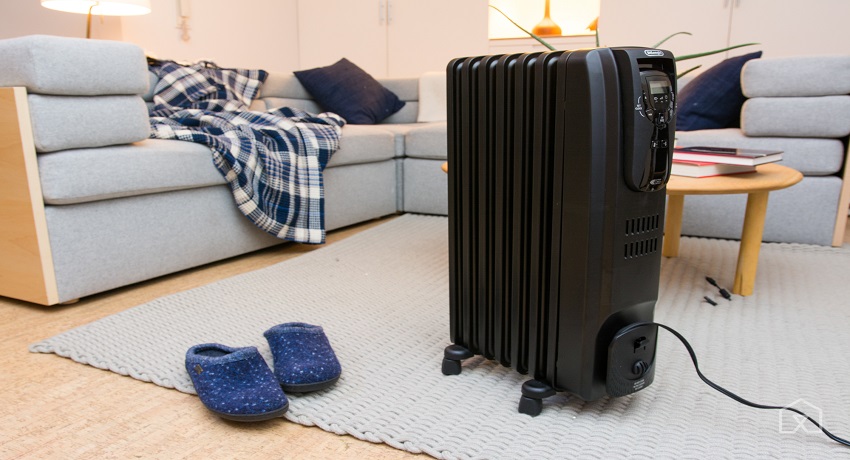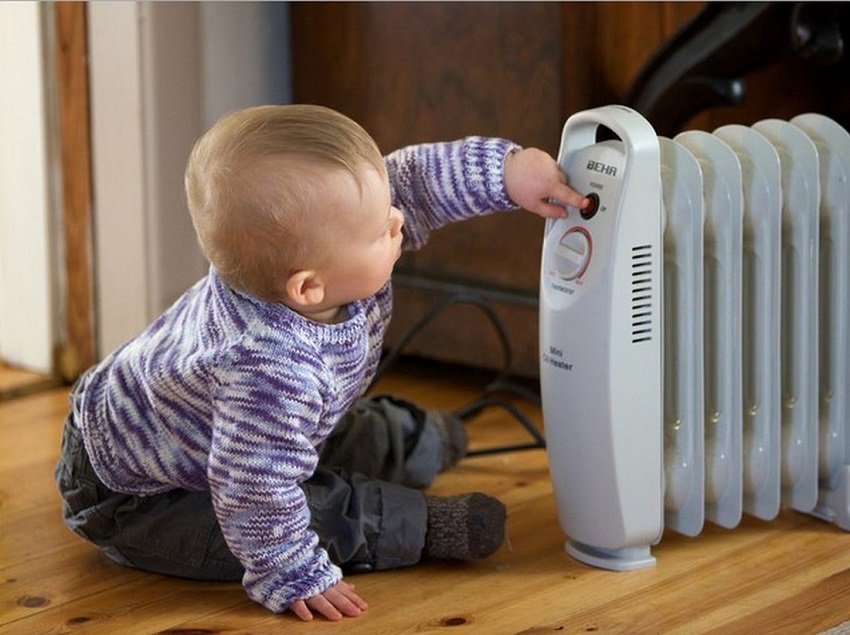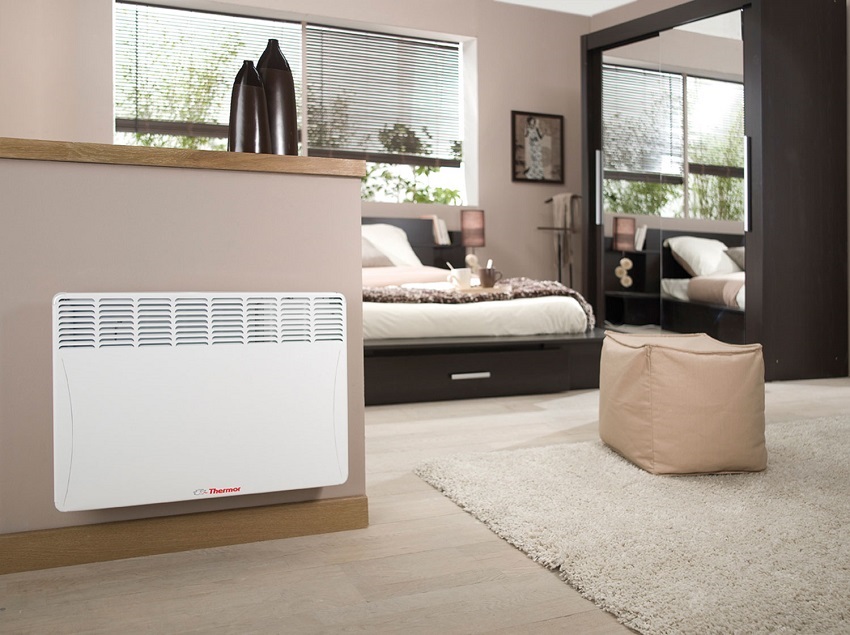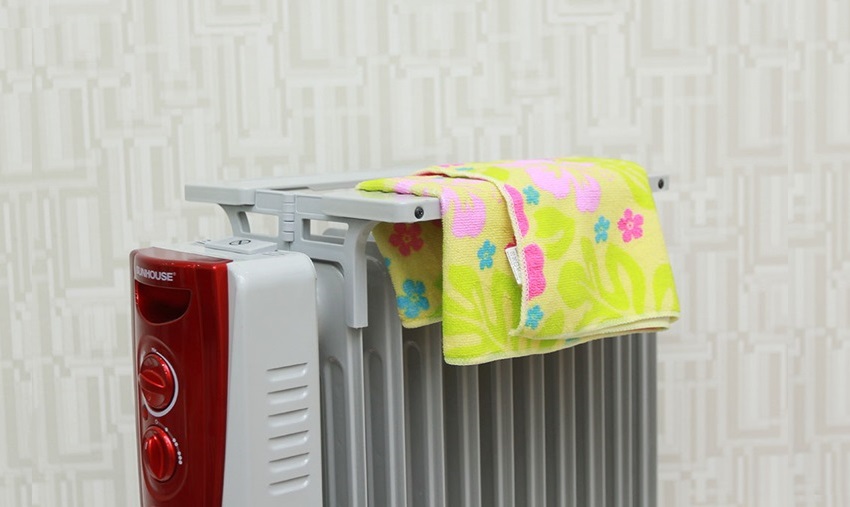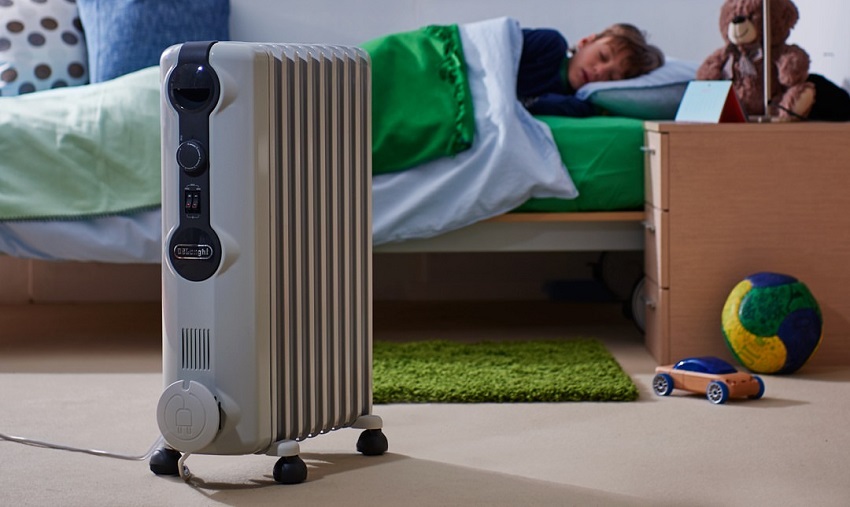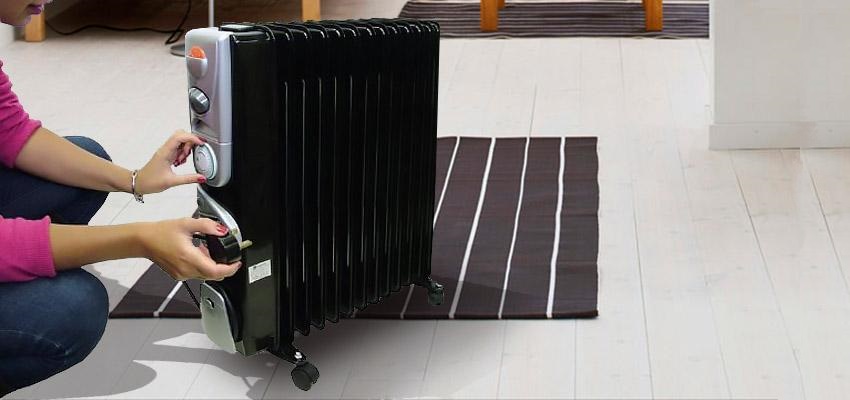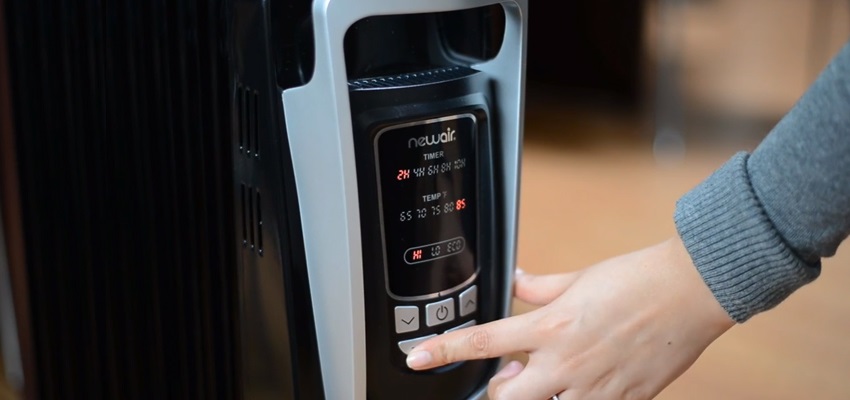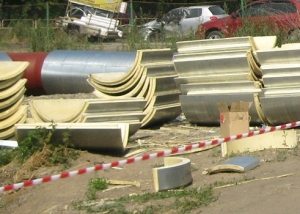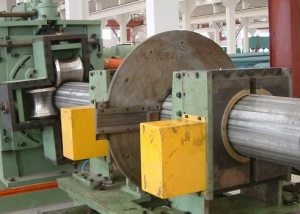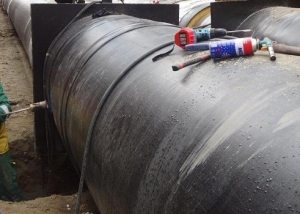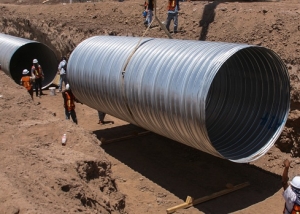Oil heating radiators are heaters inside which special oil and a heating element are placed. Such devices have several segments and are similar in appearance to standard batteries. To date, the maximum number of sections in domestic heaters is 14. The more such individual tanks, the more efficient heat dissipation is, and the less the housing itself heats up.
Content
The principle of operation of oil heaters
The device works according to this principle: the built-in heating element heats the vessel with mineral oil, which is poured into a special cavity of the radiator. The oil heats up evenly, and its heat raises the temperature of the metal case - the radiator begins to heat the room air. The design is tight, the device is equipped with temperature regulators that prevent boiling of oil: when a certain temperature in the tank is reached, the device turns off for a while, then resumes operation. Also, with a critical increase in pressure, part of the spirals closes, and a certain part of the oil is dumped into an unheated reservoir.
Important! It is necessary to ensure that the appliance standing on the floor does not roll over: this will disrupt the circulation of mineral oil, which could damage the heater.
When buying an oil heating radiator with a thermostat, you should pay attention to the characteristic of convection channels that accelerate air circulation, increasing the efficiency of the heater. The general principle of operation of such a device is distinguished from a number of other heating climatic devices, making it as convenient as possible for use at home.
Oil Based Heater Options
There are such types of oil radiators:
- Floor standing. The standard type of heater can be mobile and stationary, depending on the number of sections it is used both for home and for heating large office rooms.
- Wall mounted. More economical model with less power consumption. More often such devices are used in offices because of their immobility and heavy weight.
- "Warm baseboard." The name of the heater is due to the fact that the sections have a reduced size, but their total number is increased so that the device can be conveniently positioned along the wall.
- Heater with fireplace effect. In its body there are additional openings that accelerate the circulation of air.
The greatest popularity was gained by floor heaters, as the most convenient for heating a house. They are easy to move around the apartment (when buying, make sure that the model is equipped with wheels and a holder), depending on the number of oil tanks, they can be used to warm up one room or several rooms at once.
Wall-mounted models are most often purchased in offices: they usually contain more sections, but are characterized by low energy consumption and literally do not "get in the way" underfoot.The system of warm skirting is most often used if the apartment has a particularly cold floor, in rooms where a draft can occur, etc. Their power is significantly lower compared to classic floor models. At the same time, a radiator with a fireplace effect can be either floor or wall, this system is increasingly used in the development of new lines of climate technology.
Important technical features of the oil heating radiator
All these heaters can vary in power, so when choosing a radiator for a home, you should consider the area of the heated room. To heat 10 sq. m will require 1 kW of energy (if this is a room of standard height - 2.75 m).
In the description of the device, it is worth paying attention to such characteristics:
- power. The range of 0.5-3.0 kW is typical for oil radiators, but even high-power devices will not be able to replace central heating;
- moisture protection. This parameter is indicated by a special marking: IP20 - no protection, IP24 - protection against water splashes, IP21 - protection against drops;
- insulation coefficient: up to 0.9 - a device for insulated houses, up to 2 - for standard rooms, up to 3 - for houses with single brickwork, up to 4 - for wooden houses and buildings without thermal insulation.
Mobile heaters can be used to heat several rooms, they can be safely installed in children's rooms - the case heats up weakly (average temperature is about 60 degrees) and cannot burn.
Important! The distance between the heater and combustibles should be greater than 90 cm.
Many radiators can work in several user-adjustable modes. They are safe enough and they can be left to work unattended. There are devices equipped with humidifiers, remote controls, electronic timers. These functions simplify the use of the device, but also significantly affect its cost.
Advantages and disadvantages of using oil devices
Oil radiators have many advantages over other heaters:
- during operation, they do not absorb oxygen - do not dry out the air of the room;
- work silently, do not emit any extraneous odors;
- mobile and relatively small in size;
- affordability: different oil radiators have different prices, you can find both an expensive and a budget device. The average cost varies from 1.5 to 10 thousand rubles.
- the tightness of the oil vessel, static and moderate power consumption increase the safety of using an oil cooler compared to other heaters.
Like any device, it also has weaknesses, the main one is the slow warming up of the room. The built-in fan will help speed up the process, but such a model will cost more. Recent improvements to the devices include built-in air humidification systems and an electronic timer, with which you can adjust the heater on and off.
When choosing a device, in addition to its power, you should pay attention to the presence of a thermostat. Most models are equipped with this device, but it will not be superfluous to double-check. Also pay attention to the presence of wheels in the device: if it has many sections, then due to the large weight it will be difficult to move it without rollers.
What power is needed
Choosing an oil cooler is necessary not only on the basis of its set of functions or appearance, but also power. A small device will not be able to fully provide heat to a large room, but buying a large multi-section heater is also not always advisable. To understand how powerful the device should be, you need to make simple calculations.
For high-quality heating 10 m2 The area needs 1 kW of energy. This rule works for rooms with a standard ceiling height of 2.7 meters. That is, for a room of 15 m2 need a device with a power of at least 1.5 kW. If the height of the room is greater or less than the above, the calculation is a bit more complicated:
- Calculate the area of the room (multiply the length by the width).
- Calculate the volume of a room by multiplying the area by height.
- The result is divided by 25.
These calculations are not true for all cases: professionals recommend taking into account factors such as climate, age of construction, the condition of the joints in the walls and floors, the presence or absence of insulation and other points.
Oil heaters and their safety
Given that this is an electric device filled with oil that heats up, I want to be sure of its safety. Manufacturers claim that with proper use of the heater, the user does not risk anything.
- Can the heater roll over? This is possible only with a very strong push of the device or impact on it. But such cases are extremely rare even in homes with children.
- Is an explosion possible? No, not possible. The oil is not explosive and does not form gases when heated. If the appliance overheats, the housing may depressurize (that is, it may burst) and the oil will start to leak out. In this case, there is a risk of fire.
- The appliance crackles: is it dangerous? No. Clicking and cracking can occur for several reasons: this is the sound of the relay, which turns off the device when the set temperature is set; when you turn on the device, the oil begins to warm up, its bubbles rise to the surface with a characteristic sound; heated metal parts expand and may click.
In order for the heater to serve for a long time and not create an emergency, simple operating rules should be observed:
- Do not cover the device - this is fraught with overheating. If you plan to dry clothes on the device, then you will have to buy a special dryer, which is mounted on top of the heater: this way things get warm, but do not come in direct contact with the body.
- Do not turn on the appliance with an inoperative thermostat.
- Do not install the heater very close to walls and furniture - the protective device will constantly turn it off.
- Do not pull the appliance by the cord when moving.
- Monitor the location of the power cord so that it does not touch the hot sections of the appliance, is not pinched or twisted.
- When you turn on the device must be located vertically, on the rollers or legs provided by the design. If it was transported or stored upside down, before turning it on, let the oil drain down - so that it completely covers the heating elements.
- If for any reason there is an oil leak, then the heater repair must be entrusted to professionals. Mineral oil is most often used in devices, but it cannot be replaced or refilled independently.
Popular models of oil heating radiators
Not the last role when choosing an oil cooler is played by the manufacturer. Among the companies specializing in climate technology, the following are in demand: Israeli Timberk, Italian Delonghi, Swedish Electrolux and the multinational General Climate. In each of the companies, the most popular models stand out.
Table 1
| Model | Number of sections | Heating area, m2 | Features and Features |
| Ballu BOH / CL-09 | 7 | 20 | High heat dissipation and long heat retention with a thermostat |
| Delonghi KH 770 920 HOR | 9 | 60 | The appliance is able to warm a room with zero temperature. |
| Timberk TOR 21.1005 SLX | 5 | High mobility | |
| General Climate NY18LA | 5 | 18 | It has 3 modes, one of which provides an anti-freeze system |
| Vitek VT-2122 GY | 9 | 25 | Has a fireplace mode |
| POLARIS CR0920B | 9 | 20 | There is no maintenance function. Equipped with fire safety system |
| SUPRA ORS-05-P2 | 5 | The most important advantage is the low price. | |
| Electrolux EOH / M-3105 | 15 | Dust protection system, as well as built-in parental control | |
| Ballu BOH / CL-09 | 9 | 25 | Equipped with a thermostat. Tilt-proof design |
| Electrolux EOH / M-3221 | 11 | 30 | Increased wall thickness, thermostat. |
If during the period of cold weather another source of heat is needed in addition to central heating, then the oil cooler can effectively cope with heating. Such climatic devices are safe to use and have sufficient power to heat a small area. They can be used at a time when it is already cold outside the window, and the heating season has not yet begun.
Please note that the weight of the heater cannot be small: otherwise it may indicate that the manufacturer saved on materials, and the use of thin-walled steel of low quality can not only quickly damage the device, but can also cause a fire hazard. When washing the instrument case, it must be completely de-energized, that is, remove the plug from the outlet. Subject to all operating rules, the operation of the oil cooler should not cause any interruptions, but do not forget that even the safest device has its own life.
